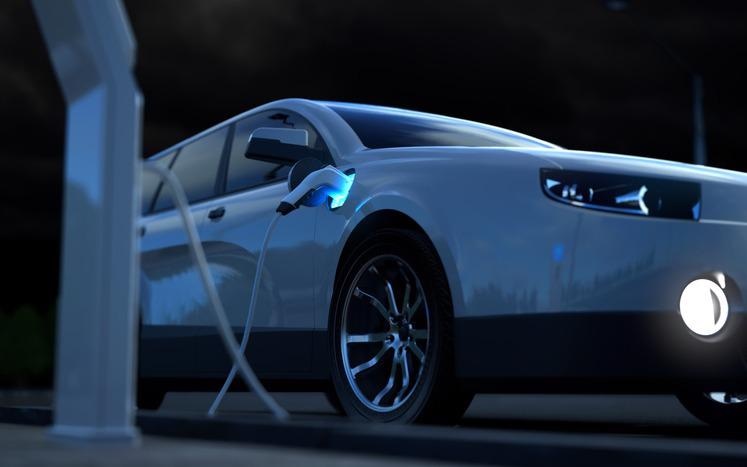Electric vehicles meet many different needs. Electric vehicles are primarily a means of transport that can get from A to B in an environmentally friendly manner. They are a benefit for the environment as they have no emissions. They are also an important step in eliminating a global fleet that is dependent on fossil fuels.
Photo credit: Amphenol Advanced Sensors
Electric cars bring an additional selling point that their internal combustion engine (ICE) predecessors didn’t have: a large portable power supply. This doesn’t just mean using an electric vehicle as a source to charge a cell phone.
Thanks to advances in battery technology and storage capacity, electric vehicles take the energy stored in their batteries with them wherever they go.
The stored energy is enough to power a house for a few days and can be used as a kind of mobile power generation unit that can take electricity with it without the noise and complication of gasoline generators.
Battery packs for electric cars use sophisticated sensor control and energy management systems as mobile power banks to obtain electricity from the local power grid. They are also able to feed energy back into the grid and provide the power from the socket directly from the battery and the inverter.
Electric vehicles open new doors for a long-lasting, safe and efficient remote and emergency power supply, paired with the right sensors.
Four applications where energy from EV battery packs makes a difference
EV batteries deliver clean and quiet electricity in the blink of an eye, wherever they are, and in many cases without special tools or training, which internal combustion engines in vehicles cannot do.
EV batteries bring power to places that lack a working power source, much like a generator. EV battery packs can be used in many applications including:
- Power outages: A fully charged electric vehicle in an average sized vehicle (e.g. a sedan) has 60-100 kilowatt hours of electricity in its battery. This stored amount of energy corresponds to 1-3 days of energy for an average household during a power failure.
- Emergency operation: An electric vehicle provides rescue workers with valuable energy, from rescue missions in remote areas to locations of major disasters.
- Construction: Electric cars and trucks offer another way to charge or operate tools, and larger electric trucks have a power bank to power heavy equipment. That means you don’t have to worry about power tools running out of power.
- Leisure: EV battery power in a large RV can aid in “boondocking” RVs without the noise and smell of portable generators. This means that leaving the network doesn’t have to mean it’s getting dark.
Optimizing EV power transfer with sensor technology
An electric vehicle must be monitored both when it is provided with electricity and when it is received.
Regardless of the direction of energy flow within an EV battery pack, the main problem is responsive thermal management. Electric vehicle sensors allow the battery to maintain peak performance when an electric vehicle is used as a power source, and provide information about current in the system, voltage and critical temperatures.
EV transformers, inverters and batteries work optimally in a temperature range of 15-45 ° C. Outside of this range, the battery can become less efficient.
Overheating is the main problem with thermal management of the battery of electric vehicles, regardless of whether the battery is supplying or receiving power. Batteries and inverters of electric vehicles emit the same heat when supplying electricity as when charging and driving the vehicle, especially when converting electricity from one form to another, e.g. B. from air conditioning in direct current.
If the temperature in the cell rises above 70 ° C, internal degradation can occur; this releases flammable gases and can potentially trigger thermal runaway. Once it starts, the thermal runaway spreads and can be extremely difficult to stop.
The sensor technology keeps the thermal management systems of the battery pack active during the entire energy transfer.
Sensors monitor other elements of the pack’s cooling system for performance and can alert the user to electrolyte or coolant leaks, water ingress or other malfunctions that could otherwise go unnoticed.
Improved real-time monitoring of thermal management systems is made possible by more advanced sensors that even send text messages to the vehicle owner if something goes wrong.
Avoiding temperature spikes, however, is only part of thermal management for EV batteries used as a portable power source. EV batteries must be brought to a minimum of 15 ℃ to function properly in colder environments.
Electric vehicle sensors can activate internal heating elements to bring systems down to the minimum temperature required to operate, just like the cooling system of an EV battery pack.
EV energy: versatility in motion
Electric vehicles are the connection between transport and technology and break new ground in mobility and bring with them functions that were previously not possible with ICE vehicles.
Electric vehicles take versatility to a new level and are more than just a means of moving things and people between destinations. The additional functionality of an electric vehicle and its battery packs, such as providing a mobile power supply solution, is safe and reliable with sensor technology.

This information has been extracted, reviewed, and adapted from materials provided by Amphenol Advanced Sensors.
For more information on this source, see Amphenol Advanced Sensors.

